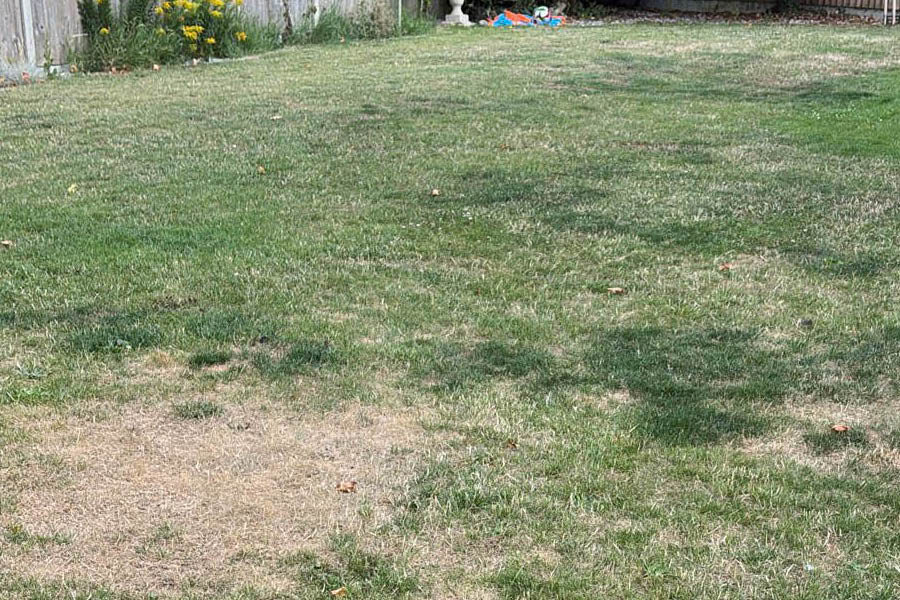

Localised compaction is one of the most common causes of brown patches in lawns — and if left untreated, it can lead to a more stubborn condition called Dry Patch.
Both problems are preventable, but when ignored, they can cause long-term damage to your lawn. The good news? With the right treatment, your lawn can recover quickly
What is Localised Compaction?
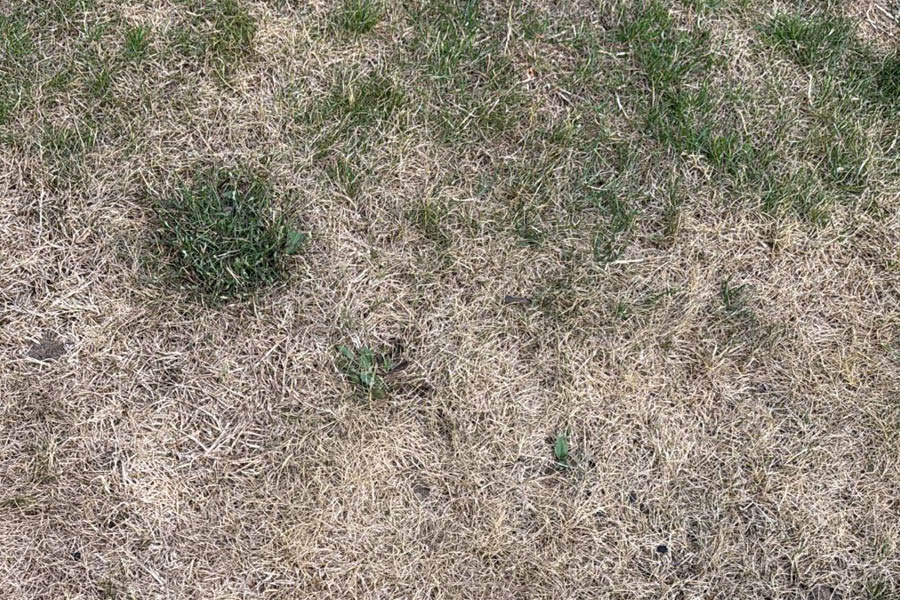

Localised compaction happens when the soil becomes pressed down, removing the small air gaps that grass roots need. Without those gaps, water, oxygen, and nutrients can’t reach the roots, and plants weaken.
It’s especially common:
On clay-based soils
In high-traffic areas
Where heavy garden equipment is used
In lawns with poor soil structure
When combined with dry weather or irregular watering, compaction worsens and can develop into Dry Patch.
Early Signs of Localised Compaction?
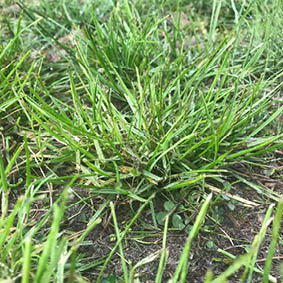

1. Stumpy Grass Growth (Even in Wet Weather)
If your lawn is watered regularly or we’ve had good rainfall, compacted areas still show short, thick, upright plants.
Roots can’t spread out.
The plant puts all its energy into growing more leaves on the same stem.
The result is thick but isolated plants instead of a dense lawn.
2. Drying Out First in Compacted Areas
If your lawn isn’t watered regularly, the compacted areas will be the first to dry out.
This triggers the Dry Patch cycle — dry soil hardens, making water penetration harder.
Roots die back, leaving the soil even more compacted.
Mycelium growth can then spread beneath the surface, further increasing water repellence.
3. Soil Sample Check
Take a small spade or trowel and remove a core of soil from a brown patch. In many cases, you’ll notice it feels noticeably drier than soil taken from the healthy parts of the lawn — even after rain. This is a clear sign that water isn’t penetrating the compacted area properly.
Real World Example – Mr Davies’ Lawn Transformation?
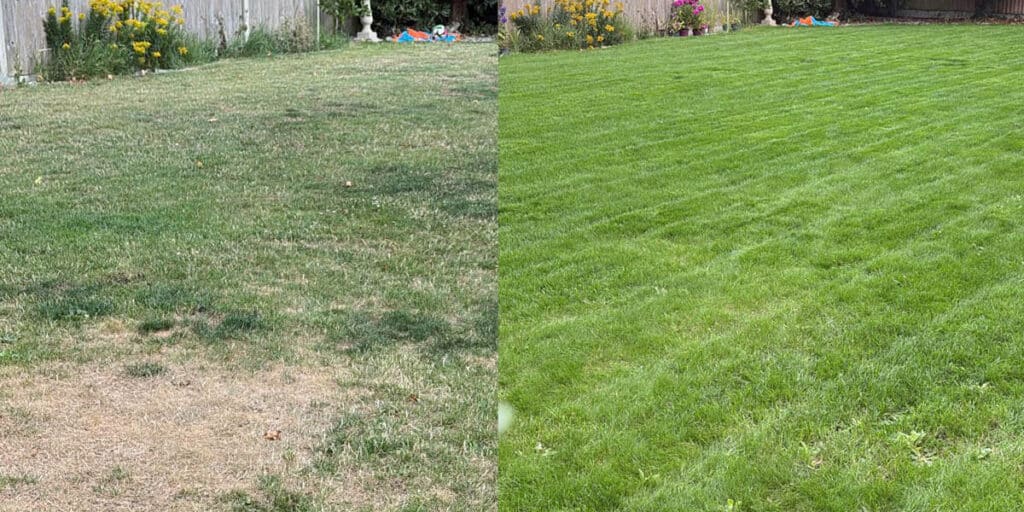

When Mr Davies contacted us, he had a big garden event planned in just six weeks — but his lawn was in trouble.
Brown, dry patches across the lawn
Weeds taking over weak areas
Signs of early compaction and the beginnings of Dry Patch
We got to work immediately. For just £38, we applied a Late Summer treatment and gave him the exact step-by-step plan you’ll find below: deep soak watering, spiking to relieve compaction, and using a wetting agent to help water soak in and stay in the root zone.
Mr Davies followed the advice to the letter. In just two weeks:
The grass was bouncing back
Weeds were retreating
The lawn was greener, thicker, and almost party-ready
By the time the event arrived, the transformation was remarkable — proving that compaction and Dry Patch can be beaten with the right approach.
How to Fix Localised Compaction & Dry Patch
Here’s the same proven process we gave Mr Davies:
Deep Soak Watering
Water the affected area heavily for 30 minutes, let it soak in, then water again for another 30 minutes.
Relieve Compaction
Spike the area with a garden fork, aiming for the deepest holes possible.
Even shallow holes help improve water penetration.
Apply a Wetting Agent
DIY: Mix a few drops of washing-up liquid in a bucket of water and pour evenly over the area. – Click here for further information
Professional: Use our Wetting Agent & Water Conserver, which helps water soak in and retain moisture in the root zone. – Click here for information on WaterSave Treatment
Follow-Up Watering
Keep the soil evenly moist until new growth is visible.
Ongoing Care
Lightly spike compacted areas every couple of weeks to maintain soil openness. Ensure it is cut regularly and watered when required (i.e. on dry days or days with little rain fall) – Click here for information on watering and here for information on lawn mowing
It’s important to note that the above works on most lawns, but if your lawn has a considerable amount of thatch, a slightly different approach may be required and results may vary. Mr Davies took our advice and stuck to it.
Professional Treatments for Lasting Results
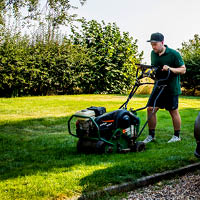

Hollow tine aeration – Removes plugs of soil to create lasting channels for water, air, and nutrients. – Click here for more information
Top dressing – Improves soil quality and encourages deeper root growth. – Click here for more information
Seasonal wetting agent applications – Keeps soil moisture balanced throughout the year. – Click here for more information
Need Help With Compaction or Dry Patch?
If your lawn is showing signs of compaction, drought stress, or Dry Patch, acting early will save time and get faster results.
📧 Email info@greenmanlawncare.co.uk with photos of your lawn, or
to arrange a professional inspection and tailored treatment plan.
